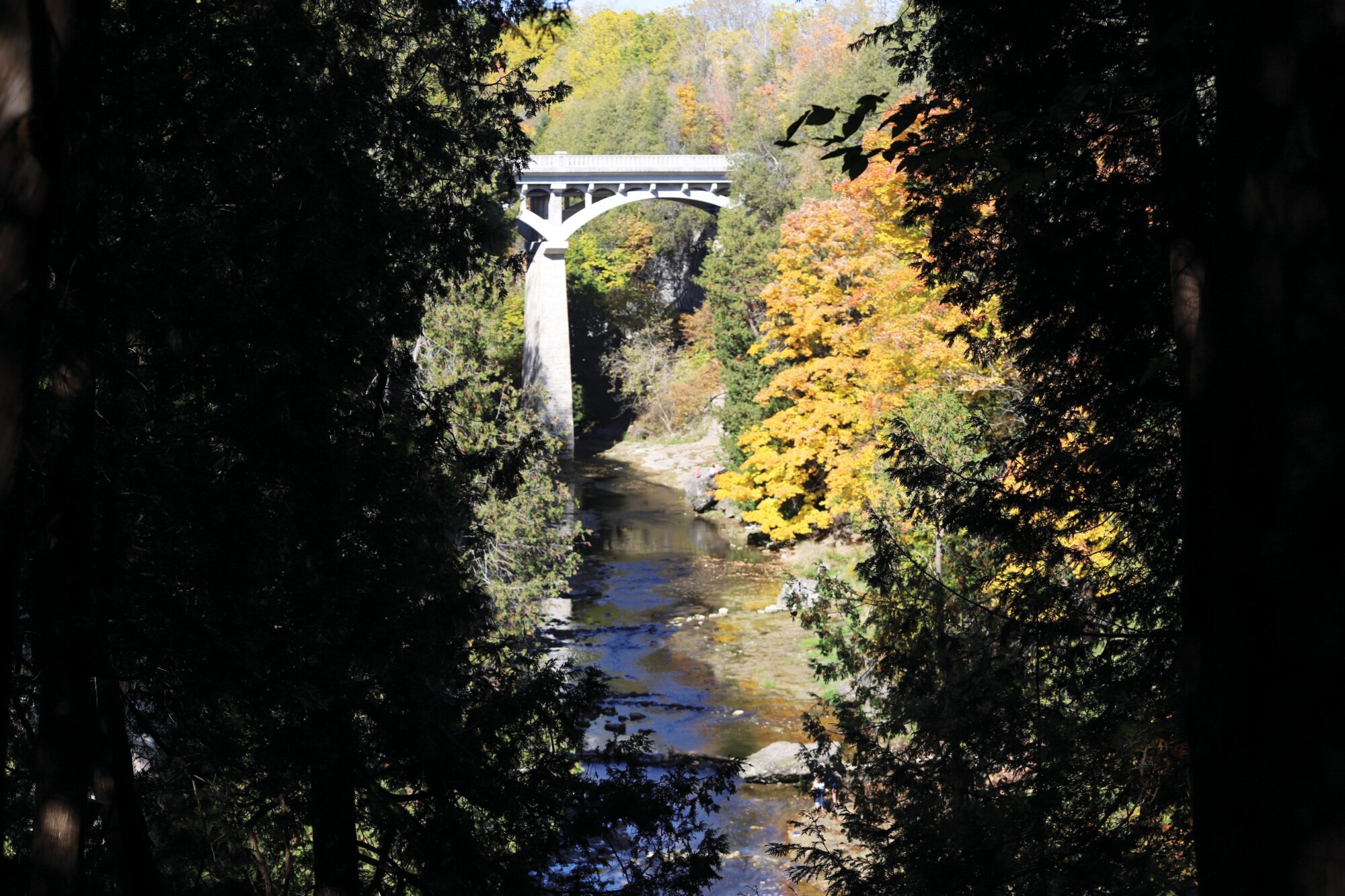Rivers in Rock is Kenneth Hewitt’s gorgeous homage to the beauty of Elora Gorge. Hewitt began with an overview of the origin story of the gorge—from its barrier reef origins below the equator to the scarce traces left by Indigenous peoples in the area to the modern town around it.
The book is both a field companion and an overview of the natural history of the gorge. As we followed the development of the gorge, we also embarked on a journey of learning about the geological history of our small piece of Southern Ontario.
Before delving into history—Hewitt mapped out three viewpoints and three excursions along the gorge and the Grand River. These are accompanied by diagrams, maps and reference photos. He also provided extensive descriptions of the geological and visual marvels to be found at each of the sites along the excursion.
In my opinion, Hewitt understood his audience well— throughout the excursions, he pointed out important locations to see the gorge’s features, but also where to have the best chance of finding fossils. I did not find any.
I and the photographer decided to make the trip out to the gorge and go on one of the excursions mapped in the book. We attempted Excursion 2, which goes from the Upper Grand Gorge to Middle Bridge. While the excursions are well-planned, we had a hard time following them when we made the trip out to the gorge.
The maps lack many landmarks, including only basic street names and a scale. This made it difficult to locate ourselves with reference to the maps and we found ourselves having to cross-reference the maps in the book to Google maps, which was an inefficient process.
Hewitt mapped the beginnings of the gorge in a large barrier reef formed during the Silurian period, whence the limestone bedrock originated. He then traced the second age of the gorge, the gradual “Great Journey” from the tropics to Southern Ontario due to tectonic activity deep under the landscape.
It is in the third age defined by the end of the Quaternary Ice Age that the gorge singularly begins to develop. The formation of the gorge is defined by the Laurentide Ice Sheet and the interactions of multiple glacial lobes and phenomena on the emerging Ontario Island—an ice-free area revealing the land underneath the ice.
Detailed maps are included throughout the book showing the relationships of different factors influencing the gorge. Here, Hewitt featured vivid descriptions of how the landscape would have differed during the Ice Age in Southern Ontario. Hewitt provided reference photos and diagrams to aid in the readers’ visualization of the different forms the gorge has taken.
The fourth age of the gorge was the Primordial Forest, where trees and animals became more influential. Hewitt specifically mentions the work of the beavers and their influence on the rivers.
Finally, we moved into the present. Hewitt recognized that Indigenous people were present in the area from at least 500 CE but left few traces behind. This is juxtaposed with the overwhelming influence of European settlers who, in around 200 years, significantly altered the gorge and its surrounding areas.
For example, abandoned farms, warehouses and other buildings can be found throughout the gorge. A large portion of the trees are much younger, since the older trees were taken for the furniture industry, and the gorge only recovered its greenery in the 20th century during the Great Depression and following the world wars.
Hewitt did a fantastic job of weaving Elora into a larger narrative and reigniting an awe of our surrounding landscape in the reader. Hewitt provided a vivid sense of the palimpsest that is our current landscape, tying our niche of the world into a grander global, geological and chronological scale.
At the same time, he provided valuable insight into the local history of Elora, especially highlighting the role of schoolteacher David Boyle in understanding the geology of Elora.
Hewitt is a professor emeritus of geography from Wilfrid Laurier University.
The concise and direct descriptions also indicate an in-depth understanding of the concepts described in the book, including a small glossary at the back for terms that may not be familiar to all readers.
However, in the conciseness of the descriptions, important context is sometimes hidden because Hewitt has more knowledge of foundational concepts in geography than the average reader. Especially when two definitions reference each other, it can become difficult to understand the concepts presented without doing outside research.
Rivers in Rock is informational as well as inspirational. It inspires readers to learn more about our own geography and history, as well as see the wonders that surround us.
Hewitt’s passion and love for his field shown through in his writing—we were excited to visit the gorge because he was so excited to show us.




Leave a Reply